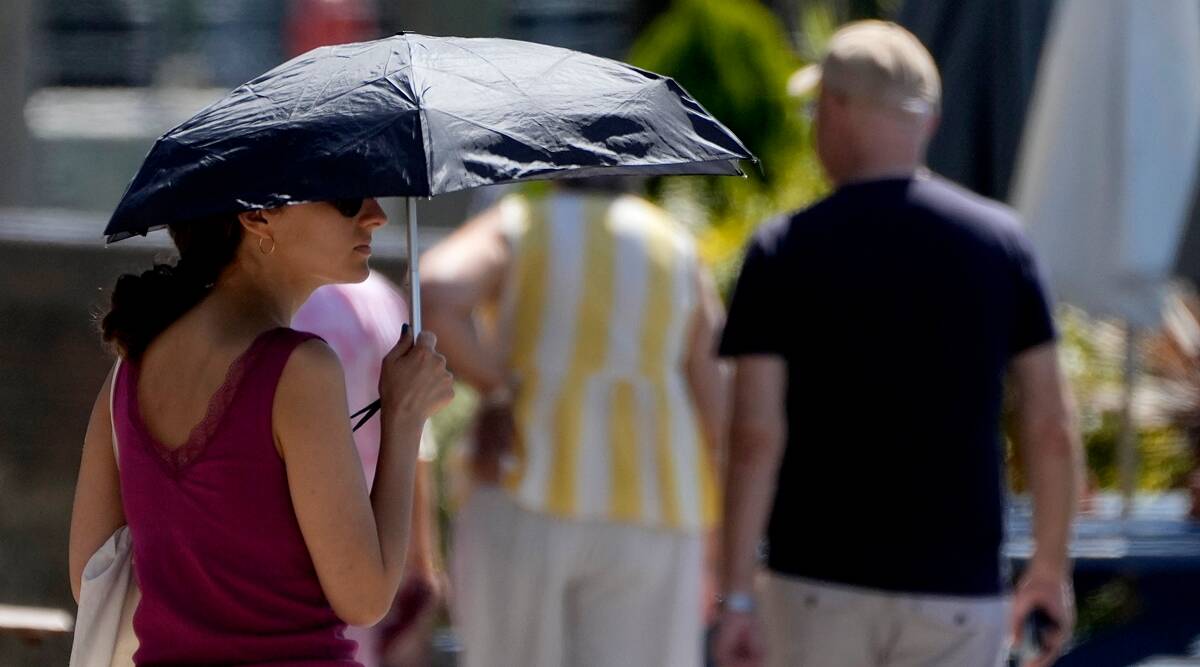On the morning news, you see the weather forecast is very hot, and there is a “excessive heat watch” for later in the week. You expected the weather to cool down, but another heat wave threatens human health and increases the chance of wildfires. In addition to these warm days and nights, air quality data has shown unhealthy levels of pollution.
Sounds familiar? This scenario is increasingly the new normal in many parts of the world.
Buy now | Our best subscription plan now has a special price
High temperatures and air pollution are problematic for human health, particularly for vulnerable populations such as the elderly. But what happens when they hit at the same time?
We examined more than 1.5 million deaths between 2014 and 2020 recorded in California, a state prone to summer heat waves and air pollution from wildfires, to find out.
Deaths increase when both risks are high
The number of deaths increased both on hot days and on days with high levels of fine particles the air pollution, known as PM2.5. But on days when an area was hit by a double whammy of high temperatures and high air pollution, the effects were far greater than for each condition alone.
The risk of death on those extremely hot and polluted days was about three times higher than the effect of high temperatures or high air pollution alone.
The more extreme the temperatures and pollution, the greater the risk. During the top 10% of the hottest and most polluted days, the risk of death increased by 4% compared to days without extremes. During the top 1%, it increased 21%; and among adults older than 75, the risk of death increased by more than a third on those days.
Why the risks are higher when both hit at the same time
There are several ways that the combined exposure to extreme heat and particulate air pollution can harm human health.
Oxidative stress is the most common biological pathway related to particulate air pollution and heat exposure. Oxidative stress is an imbalance between the production of highly reactive molecules known as reactive oxygen species, or ROS, and the body’s ability to remove them. It has been linked to lung disease, among other illnesses.
Antioxidants help cleanse these molecules, but particulate air pollution and heat upset this balance through excessive production of metabolic ROS and decreased antioxidant activity.
Our research also showed that the effects of particulate air pollution and heat extremes were greater when high nighttime temperatures and pollution occurred together. High nighttime temperatures can interfere with normal sleep and potentially contribute to chronic health problems, such as heart disease and obesity, and disrupt the way the body regulates temperature.
Older adults may be more susceptible to the effects of extreme heat and air pollution exposure, in part because this stress is compounded by age-related chronic health conditions such as heart disease, high blood pressure, diabetes or chronic lung disease. Impaired regulation of body temperature in response to heat can also occur with aging. And older adults may be less mobile and therefore less able to get to cooling or medical facilities and less able to afford air conditioning.
A future of high temperatures and air pollution
This is not just a California problem. Climate change Exposure to high temperatures and air pollution will increase in many parts of the country.
Annual average temperatures in the US are already more than 1.8 degrees Fahrenheit (1 degree Celsius) warmer than they were at the beginning of the 20th century. By the end of this century, global temperatures are on track to be almost 5 F (2.7 C) warmer. Dangerous extreme heat waves, currently rare, will become more common.
Climate change is also affecting outdoor fine particulate pollution levels, for example, through climate changes such as stagnant air events, wind and dust storms, and drier, warmer conditions that contribute to wildfires every year. more frequent and intense.
What to do to stay safe
More research is needed to better understand these effects, such as the full impact of wildfire smoke exposure. However, enough is known for people to take steps to reduce the risk of harm during periods of extreme heat or air pollution.
That means staying well hydrated and staying cool. Shopping malls and other air-conditioned public spaces can provide a haven from the heat. Domestic air conditioning, especially at night, can reduce mortality. A portable air filter in the bedroom can significantly reduce levels of particulate pollution.
People with symptoms of heat stress, such as headachenausea, dizziness or confusion, especially the elderly, should seek medical attention.
Many state and county health departments already provide alerts about extreme heat and extreme air pollution. The development of a special category of alert during concurrent extremes may be beneficial to public health.
Governments must also take action now to avoid worst-case scenarios of climate change in the future. Some of the best practices for cities include creating a cooling shade cover and green spaces that will also reduce particulate pollution.
📣 For more lifestyle news, follow us on Instagram | Twitter | Facebook And don’t miss the latest updates!
!function(f,b,e,v,n,t,s)
{if(f.fbq)return;n=f.fbq=function(){n.callMethod?
n.callMethod.apply(n,arguments):n.queue.push(arguments)};
if(!f._fbq)f._fbq=n;n.push=n;n.loaded=!0;n.version=’2.0′;
n.queue=[];t=b.createElement(e);t.async=!0;
t.src=v;s=b.getElementsByTagName(e)[0];
s.parentNode.insertBefore(t,s)}(window, document,’script’,
‘https://connect.facebook.net/en_US/fbevents.js’);
fbq(‘init’, ‘444470064056909’);
fbq(‘track’, ‘PageView’);
.
